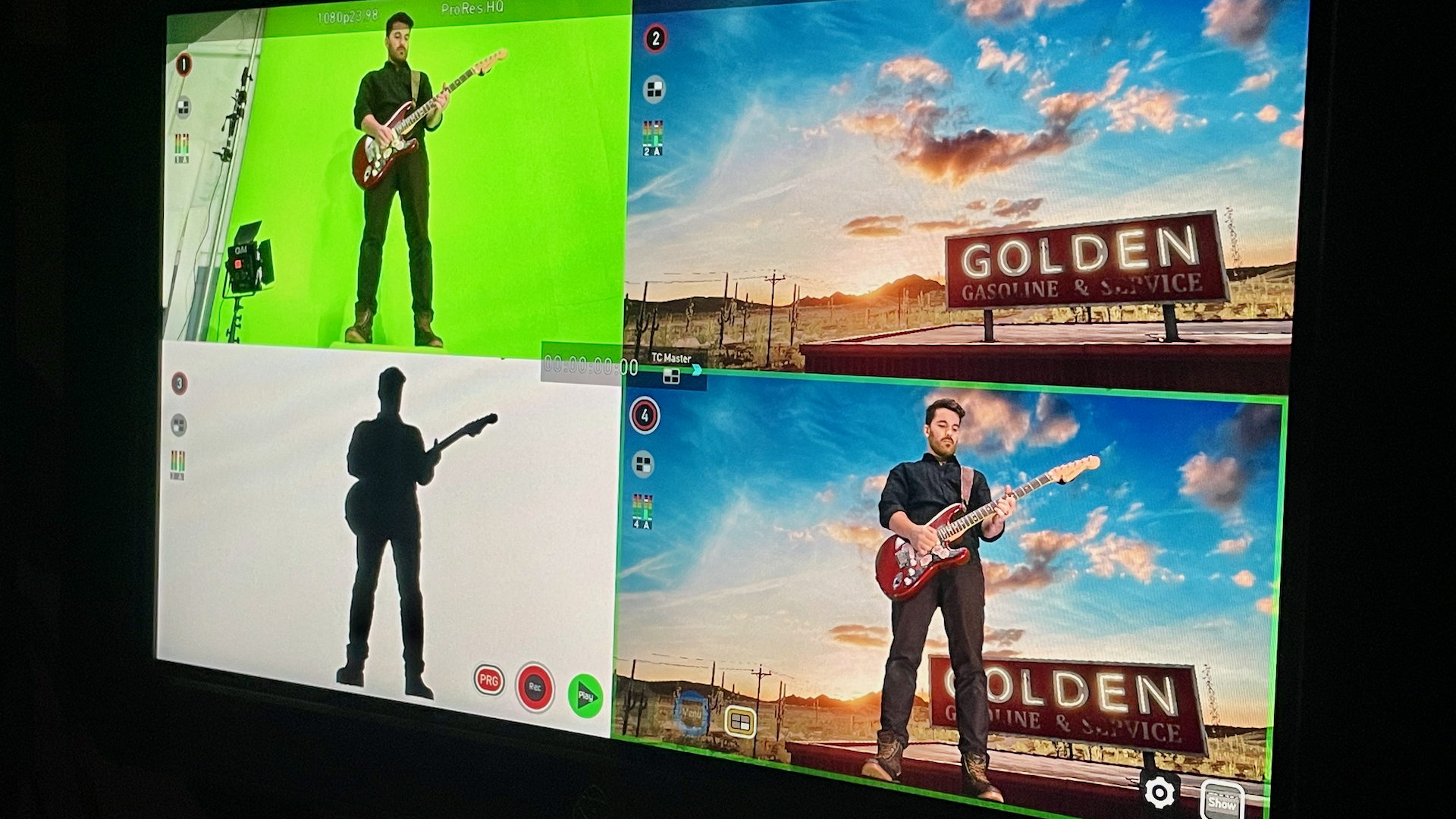Today we are delving into the ubiquitous world of green screens, shedding light on how to sidestep the pitfalls that scream “cheap” and instead create seamless, high-quality final products with your green screen.
1. The Devil is in the Details: Your Green Screen Itself
Start by choosing a top-quality green screen background. Whether you are using a portable green screen or a more permanent green screen studio with a single green wall or better yet a cyclorama background Avoid shiny, reflective materials that cause hotspots, distorting the uniformity of the screen color. Opt for a matte finish; a perfectly flat, wrinkle-free surface is paramount.
Then comes the precise green hue. Avoid the allure of that neon green bedsheet; it’s a siren song to a rough and unconvincing composite. A more subdued chroma key green is the industry standard, chosen for its rarity in human skin tones and most wardrobe options.
2. Lighting: Not Just the Green Screen’s Friend, But its Soul Mate
A poorly lit green screen can wreak havoc on post-production. Ensure uniform lighting across the screen to avoid shadows and bright spots. This process may be time-consuming but it’s a wise investment to prevent the “green spill” effect that cheapens your shots.
Soft, diffuse light on your green screen wall is highly recommended, while your subject needs separate, three-point lighting (key, fill, and back) to maintain distinct lighting dynamics and depth. Backlighting on your talent’s hair and shoulders can be extremely helpful in eliminating green spill which can significantly improve your key.
3. The Art of Composition: Less Clutter, More Substance
A green screen does not give you a free pass to ignore the fundamentals of composition. Even with infinite digital backgrounds at your disposal, a well-balanced shot remains the cornerstone of compelling visual storytelling.
Maintain the rule of thirds, use depth of field effectively, and think critically about the relationship between your subject and the anticipated digital environment. A subject looking out of a skyscraper window won’t convince anyone if they’re positioned at knee level.
4. Costumes and Props: Say No to Chroma Key Casualties
Costume choices require particular attention. Avoid colors close to your screen’s hue unless you’re aiming for the “head-floating-in-mid-air” aesthetic. Be mindful of reflective materials and small, intricate patterns that could create post-production headaches. We wrote about this critical step in more depth (Shooting On a Green Screen: Tips on Styling and Wardrobe). White shoes and clothing can be a nightmare because it will easily show green spill reflected from the background, especially in a brightly lit environment such as broadcasting.
Similarly, props can make or break your illusion. If they interact with your actors, it’s essential they exist in the physical space. A cheap-looking scene often occurs when an actor is forced to mime interactions with non-existent digital props.

5. Motion Matters: The Perfect Blend of Real and Digital
In post-production, ensure that all digital elements match the physical camera’s movements. A static digital background behind a handheld physical shot screams “low-budget”. If the original shot pans, tilts, or zooms, your digital environment should replicate these movements to maintain realism. Good camera tracking software and hardware can be costly, but also worth its weight in gold.
6. Digital Environment Quality: Don’t Skimp on the Backdrop
In the world of green screens, the digital environment is your second star. Using a low-quality digital backdrop can render your meticulous green screen efforts pointless. Employ high-resolution, detailed backdrops that blend seamlessly with your physical elements. With the introduction of the Unreal Engine to the virtual production community several years ago, it has become more possible than ever to seamlessly blend the virtual and real worlds and create incredibly complex and realistic virtual sets.
7. Finishing Touches: Fine-tuning is Fine Art
Finally, meticulous fine-tuning is crucial. Post-production is where you can polish or tarnish your masterpiece. Refining the edges, adding subtle digital shadows, tweaking color balance, and adding noise to match the film grain of the physical elements can all elevate your scene from looking like a mediocre high-school project to rivaling a Hollywood blockbuster.
Green screens are powerful tools in the hands of videographers, visual effects artists, and photographers. But remember, they are tools – not crutches. The same principles that guide all great visual work apply. Ignore these at your peril, as no amount of digital wizardry can fully rescue a poorly planned and executed shot.
Crafting green screen shots that don’t look cheap requires a balance of planning, technique, and post-production prowess. When executed correctly, the results are worth every pixel of effort. So keep these tips in mind, and elevate your green screen game to new, captivating heights.
Although we can’t fix any bad acting or keep your editing software from crashing at the worst possible times, Pro Cyc’s portable green screens and modular cyclorama wall systems can ensure that your backdrop is the best possible and will be at least one thing you don’t have to worry about. Our screens have been used on top Hollywood productions including “Batman v Superman: Dawn of Justice.” Have something reliable and check out our affordable options!


